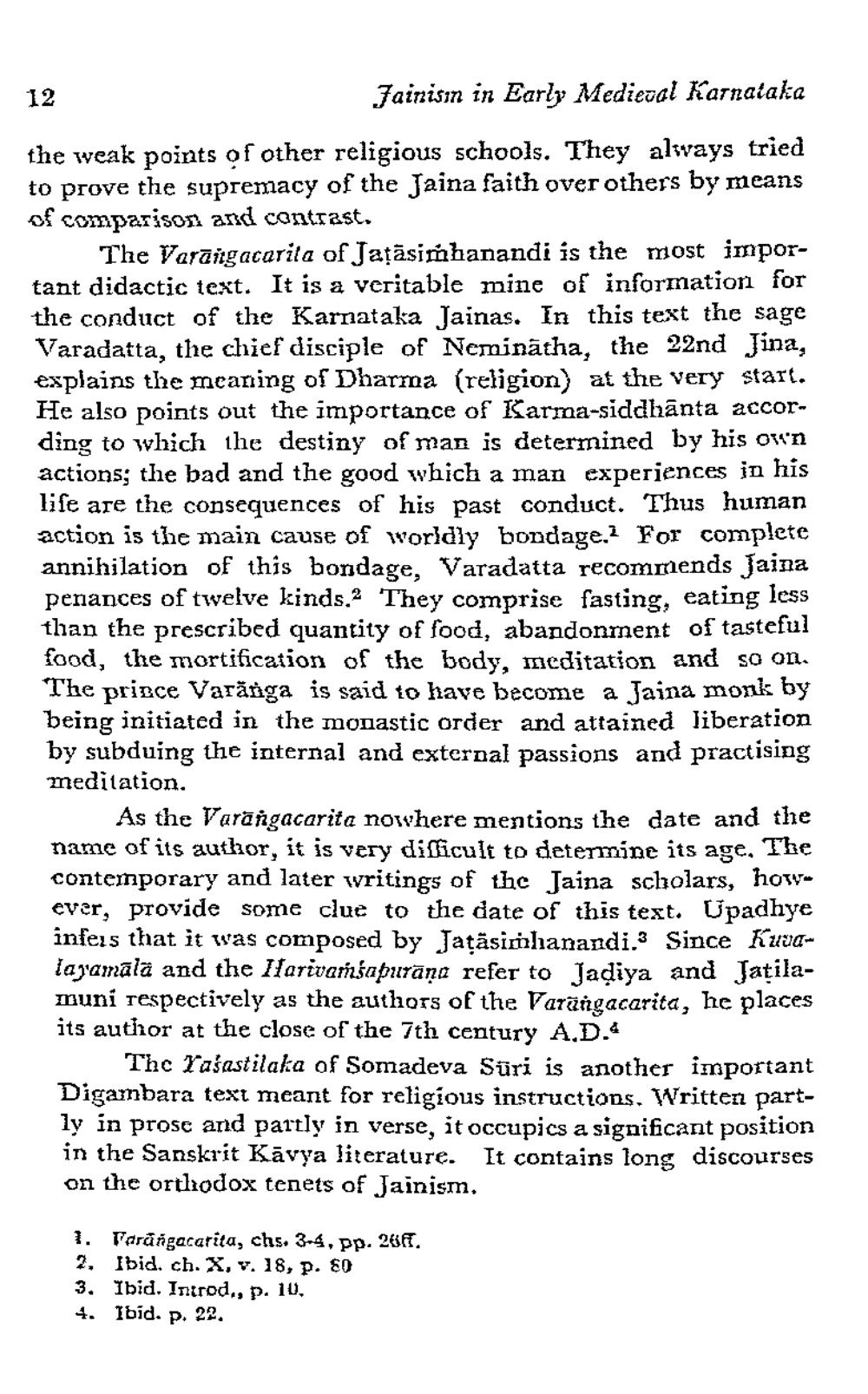________________
Jainism in Early Medieval Karnataka
the weak points of other religious schools. They always tried to prove the supremacy of the Jaina faith over others by means of comparison and contrast.
12
The Varangacarita of Jaṭāsimhanandi is the most important didactic text. It is a veritable mine of information for the conduct of the Karnataka Jainas. In this text the sage Varadatta, the chief disciple of Neminatha, the 22nd Jina, explains the meaning of Dharma (religion) at the very start. He also points out the importance of Karma-siddhanta according to which the destiny of man is determined by his own actions; the bad and the good which a man experiences in his life are the consequences of his past conduct. Thus human action is the main cause of worldly bondage. For complete annihilation of this bondage, Varadatta recommends Jaina penances of twelve kinds.2 They comprise fasting, eating less than the prescribed quantity of food, abandonment of tasteful food, the mortification of the body, meditation and so on. The prince Varänga is said to have become a Jaina monk by being initiated in the monastic order and attained liberation by subduing the internal and external passions and practising meditation.
As the Varangacarita nowhere mentions the date and the name of its author, it is very difficult to determine its age. The contemporary and later writings of the Jaina scholars, however, provide some clue to the date of this text. Upadhye infers that it was composed by Jaṭasimhanandi. Since Kuvalayamālā and the Harivamsapurana refer to Jaḍiya and Jațilamuni respectively as the authors of the Varungacarita, he places its author at the close of the 7th century A.D.*
The Tasastilaka of Somadeva Suri is another important Digambara text meant for religious instructions. Written partly in prose and partly in verse, it occupics a significant position in the Sanskrit Kavya literature. It contains long discourses on the orthodox tenets of Jainism.
1. Tarangacarita, chs. 3-4, pp. 26.
2.
Ibid. ch. X, v. 18, p. 80
3. Ibid. Introd., p. 10. 4. Ibid. p. 22.




